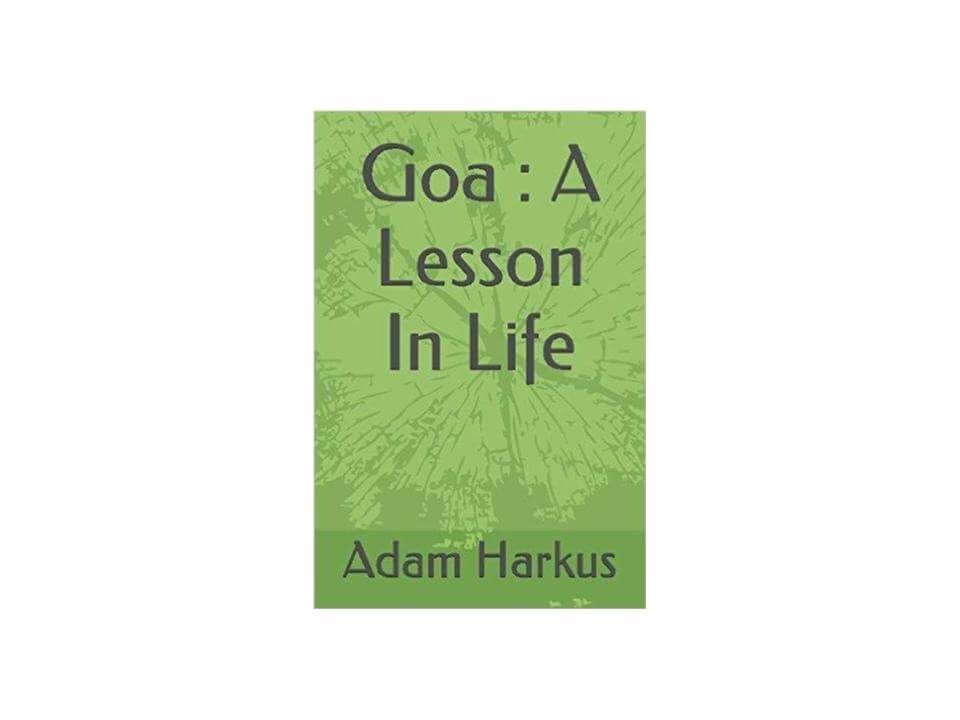I woke early in a cold, refreshing sweat. As if the toxins were leaving my body. The stomach cramps had dulled for now, but I knew it wouldn’t last. Yesterday was a bad day, but today, somehow I felt strong, determined. Perhaps I’d hit rock bottom and the only way was up from here. Looking up at the roof, the collection of small insects minding their own business didn’t seem so bad, didn’t bother me as much. I was just a visitor here after all. I decided there and then that today was the comeback, a day of settling in and making the most out of my time here. There was a list of tasks building by the minute at the back of my mind as I got to my feet. First of all was the malaria tablets, which I promptly deposited into the bin. No more stomach cramps. Next, I set about the mess of clothes strewn about the floor, putting the used items in a plastic bag and the rest back in the case. Next up was all the documents, my passport and reading matter I’d brought with me, which were filed away neatly in the desk drawer. I’d almost forgotten about the rat the night before, maybe it was an over-reaction but today I felt totally different. Today I felt ‘together’ and ready for anything. And there you had it. A completely tidy room. Great start I thought, but even better than that was the space I’d created, just enough to train in. With a smile I began the stretching routine there and then, the smooth stone floor being just about the perfect surface to train on.
After I’d pushed myself just enough for the first session, I decided to keep riding this new wave of positivity, the shower room was just down the terrace a few metres away, It was still very early, so I spent a while washing away the doubts of the previously few days. Today I’d visit Goa’s capital: Panjim (in English), and from there I promised myself I’d try somewhere different every day. I’d got myself into a rut trailing the path from Anjuna to Baga (and Calangute) each day, clearly we were still in off-season so I needed to try something else. As I made my way out of Anjuna Palms, Felix’s wife stopped me midway down the path. You couldn’t miss her really, she was a tall woman with a ridiculously large dark perm, huge spectacles ,bright colourful clothing and an even brighter smile. She asked me how I was enjoying Goa in her usual cheery manner, to which I lied I was having a fabulous time. She offered to do my laundry, another step in the right direction. Tick. I also took the opportunity to ask her about a place to train, the room was ok, but not big enough to practice Kata. She looked up inquisitively at a half finished concrete building just to our right, without a roof, but a flat concrete ceiling of the first floor, and staircase leading up to it from the side. I enthusiastically bounded up the steps, revealing a large flat square area. From up here I could see quite a bit of Anjuna, even some of the path down to the beach, it didn’t look too bad at all. I managed a smile of approval at Felix’s wife and her young son who had appeared below, I was going to love training up here.
First stop, Mapusa. The coach ride was just as exhilarating as before, but now I felt in the groove and more able to calmly observe my surroundings, taking in the changing scenery from dense undergrowth to vast open farmland and through various pockets of activity, neighbourhoods and commercialism. I loved to people watch, wondering about a group of old men chatting over a drink in a nearby cafe as the coach whizzed past them. Where they that different to me ?
Mapusa. No market today, but a definite plan; Find the connecting coach to Panjim. As I stood in the blistering early morning heat, I was completely lost again, just like last time, as I looked helplessly at the fleets of coaches huddled up in front of the terminus. No timetable here, just dust-ridden, heated, frenzied chaos amongst a deafening barrage of clapped-out engines and faint shouting. I was reminded of my confusion over the name Mapusa, pronounced Map-sa as opposed to Ma-poo-sa, so I listened out for something even vaguely resembling Pan-jim. No such luck, nothing even close. I was met with mostly blank expressions when I asked for directions, but eventually was pointed in a direction towards the edge of the terminus. I tried to shut out the noise, focussing on the driver’s assistants calling out various unfamiliar destinations, even just a name beginning with the consonant p. Faintly I heard it…. P….Pan….. so I followed my nose. Panj… Pan-je! Well, close enough. I was now on the coach to Panjim, or Panaji to give it it’s original name, but pronounced Pan-je, At least I hoped that was my destination.
As the road to Panjim opened out onto a modern motorway, the first I’d seen here, I was shocked. Large buses and trucks screaming past tiny mopeds from both sides. Indians apeared to use mopeds to transport just about anything. Washing machines, tables, even their whole family, some of them riding on the handlebars with no crash-helmets to be seen, anywhere. Lorries casually losing their loads with no-one batting an eyelid. In a word, carnage. Gladly we eventually came to an expansive river with a sleek looking bridge and over into Panjim station. This was my first taste of severe overcrowding, as I had to force my way out of the bus, and through a terminus/market that put Mapusa to shame and was thankfully a lot cooler than outside. Eventually, herded by the crowds out of the station, I came across an unassuming local cafe/restaurant. As I walked in I was overwhelmed by the authenticity of the place. No concessions to tourists here and no over-polite waiter service, this was, by the looks of the clientèle, the coach-drivers choice. I wasn’t greeted, but also wasn’t made to feel unwelcome. I was merely here to eat, and I sort of liked that. So I just found a space, on large table covered with grotty but colourfully patterned English cafe-style plastic sheets. My co-eaters didn’t seem to be conversing with each other anyway. I noticed the lack of cutlery, the technique being that you used a chapati to scoop up the rest of the dish and to mop up afterwards. Rumour has it the right hand is for eating and the left hand is for wiping your behind, but don’t hold me to that one. The smell of the place was singing with dense exotic spices and fresh herbs, which made my mouth water, but I hadn’t a clue what to order. Some groups had an assortment of dishes laid out, Thali style, some were indulging in typical looking runny curry dishes. I was handed a menu without a word and guessed by the number of people sitting with delicious-looking pots of rice that the most popular dish in the restaurant was Biryani. Glancing at the menu, some of it mercifully in English, there was a whole section devoted to Biryani. Mutton, mutton on the bone, chicken, chicken on the bone and a whole host of other options that have faded from memory. I felt re-assured I was making the right choice here, but as I ordered mutton on the bone Biryani I had no idea that this would be, by far, the most delicious meal I’d ever tasted, and would never taste anything like it again outside of India.
Before it arrived, the completely mute but coldly efficient waiter produced, of all things, a knife and fork, which raised a few eyebrows and some hushed rumblings. But in a strange sort of way I felt quietly confident here, I didn’t feel like I was being constantly watched like back on the coast. I actually felt like one of them, an individual just off the street with an empty belly, but also, proud to be different, proud to be English. I’d like to believe there was a feeling of mutual respect in that restaurant on that day. I was also presented with what appeared to be a standard accompaniment dish in these parts. A simple plate of small sweet onion bulbs along with lemon slices, an absolutely magical combination of sweet, sour, tartness and smoothness. Indian’s just had it, they knew how to cook, an almost spiritual ability to zone in on the parts of the taste-buds that make the most impact.
And then the main event appeared.
I’d had Biryani before back home. It was a rice dish that was cooked with the meat and veg. It was almost always pretty dry and bland, but came with a separate curry sauce. What was presented with me, on the surface, looked vaguely similar, but was served in a brass pot. On closer inspection however, the top layer of rice had hardened, almost forming a thin husk with fragrant, decadent saffron threads inviting me in. I took my fork and self-consciously prodded into it, revealing the most perfectly cooked by still moist rice below the surface, as the steam escaped I was hit by an almost overwhelming dose of herbs and spices that I haven’t experienced before or since. Ginger, garlic, chili, cumin, coriander, cinnamon and cloves. Too many to mention, and each playing their own part. I dug in, the dry crunchy upper layer contrasting beautifully with the firm but moist, steaming, fragrant rice of the layer below it. This was not just any rice either, every grain seemed to be embued with a different colour, texture, or subtle spice variation, aniseed-like cardamom seeds exploded in my mouth as I hungrily made my way through layer upon layer of joy, all held together with an ingredient I’d never heard of before, ghee, or clarified butter. The ghee made the whole dish glisten, coated the rice with the herbs and spices, and, along with the cherry-on-top saffron, made the dish what it was, and put it leagues ahead of any rice dish back home. The almost unbelievably tasty concoction eventually revealed a final dark layer of deeply succulent mutton, which upped the concentration of spice to the point where I had to come up for breathe for a moment to acknowledge the genius of the dish to both myself and my immediate neighbours. I also took a moment to judge just how far removed the dry, bland, unimaginative English byriani was from the real Mccoy. This was a different dish, a different world. It had obviously been put together with great skill and care, and cooked in one pot. Somehow the chef had managed to cook both the rice and the meat perfectly, hadn’t dried out the rice and kept all the moisture in, without turning it into rice pudding, but maybe that was all to do with the ghee. Another way I would describe the dishes construction would be a trifle, with three contrasting layers and a surprise waiting at the bottom. The end of the dish was met with great sadness as I desperately scraped the bottom of the bowl in search of one last morsel. I was addicted and wanted more, but judging by the look of mild disgust on the guy sat opposite, it was probably time to go.



